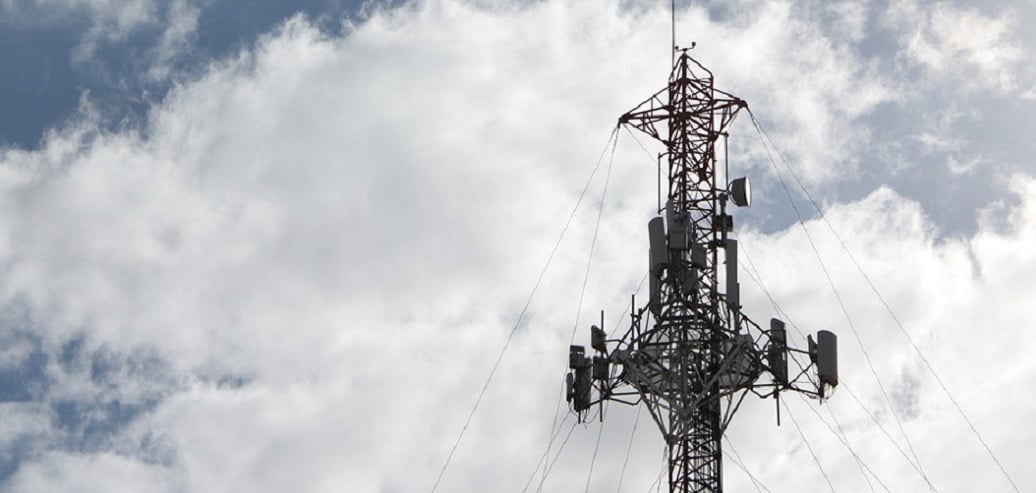As we become more connected in our daily lives, the demand for communication antenna continues to grow. With more Canadians than ever using wireless devices such as smartphones and tablet PCs demanding more services and faster data, we increasingly need more towers.
There are approximately 13,000 wireless antenna towers across Canada and this number is only increasing to meet demand(1).
The Most Dangerous Job
To erect or maintain communication towers, workers regularly climb towers, using fixed ladders, support structures or step bolts, from 100 feet to heights over 1000 or 2000 feet. Employees climb towers all year, including during severe weather conditions(2). Due to this, communication tower maintenance work has been called the most dangerous job in America(3).
Risk and Liability
In the U.S., tower climbing is a small field of roughly 10,000 workers, and cell phone carriers and tower owners have insulated themselves from legal and regulatory liability for on-the-job injuries by delegating this work to layers of subcontractors(4).
Subcontracting offers many advantages including reducing costs, maintaining quality assurance, increasing productivity and preventing problems. But contractors are more at risk than workers, specifically they are 3 times more likely to be injured in the first month on a job than experienced workers(5). Even though they may be professionals, when they arrive onsite they are new to a work sites’ facilities, materials and manner of doing things which increases the level of risk.
Further, there is less investment in contractor training. Training is expensive, and employer spending on training and development has declined significantly in Canada over the past two decades(6). As companies are looking to recover their investment, contractors who are working with them for shorter periods of time are a less desirable group to invest training in.
ProPublica and Frontline examined 50 deaths on cell sites in the U.S. between 2003 and 2011, and found that workers were often poorly trained, improperly equipped or working under intense deadlines. To save time, they sometimes work without attaching their safety gear to the tower, leading to falls(7).
To manage this, the U.S. Occupational Safety and Health Administration (OSHA) began systematically tracking which company subcontractors were working for when accidents occurred, insisting that carriers and tower owners must take more responsibility for safety.
Contractor Management
In contrast, Canada’s communications antenna construction industry has an enviable workplace safety record thanks in part to proactive discussion, reviews and the promotion of safe industry practices by the Structure, Tower and Antenna Council (STAC). STAC helps to ensure communications antennas in Canada continue to be constructed with the highest regard to worker safety(8).
However, there is still a great deal of risk involved and inefficient, incomplete or inconsistent contractor management practices greatly increase the risk of costly delays, mistakes, and hazards to health, safety, equipment and the environment.
When it comes to health and safety it’s not what you do, but how you do it, and managing contractors is the key.
It’s important to ensure that expectations are communicated clearly, and for companies to take charge of contractors and harmonize contractor practices with their own. It’s also important to consistently ensure that all contractor documents, certifications and permits are current and compliant to avoid reprimands and penalties. There are 5 key steps for labour outsourcing management. All of this can require enormous energy and discipline, which is why contractor management software is essential.
- http://www.ic.gc.ca/eic/site/ic-gc.nsf/eng/07422.html
- https://www.osha.gov/doc/topics/communicationtower/
- https://psmag.com/osha-takes-a-closer-look-at-the-most-dangerous-job-in-america-959ce67c2b86#.hf4iebjfr
- https://psmag.com/osha-takes-a-closer-look-at-the-most-dangerous-job-in-america-959ce67c2b86#.hf4iebjfr
- http://www.iwh.on.ca/at-work/69/study-finds-persistence-of-higher-injury-risk-for-new-workers
- http://www.conferenceboard.ca/topics/education/commentaries/14-03-20/developing_skills_where_are_canada_s_employers.aspx
- https://psmag.com/osha-takes-a-closer-look-at-the-most-dangerous-job-in-america-959ce67c2b86#.hf4iebjfr
- https://psmag.com/osha-takes-a-closer-look-at-the-most-dangerous-job-in-america-959ce67c2b86#.hf4iebjfr





